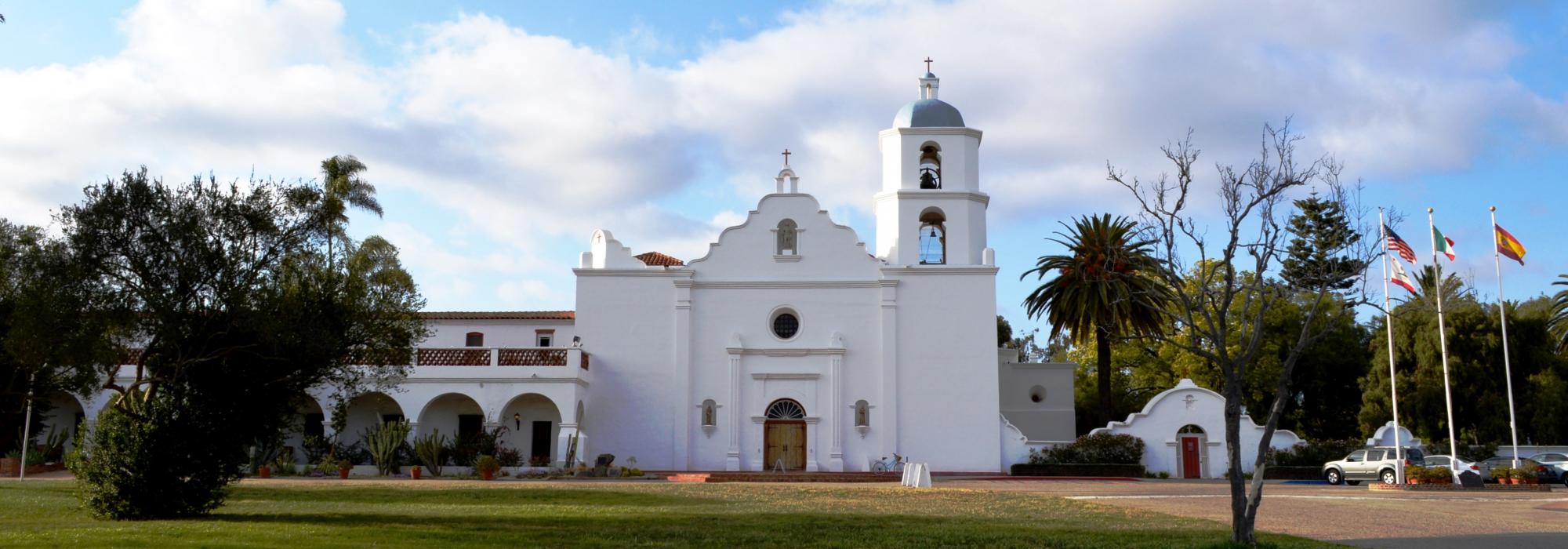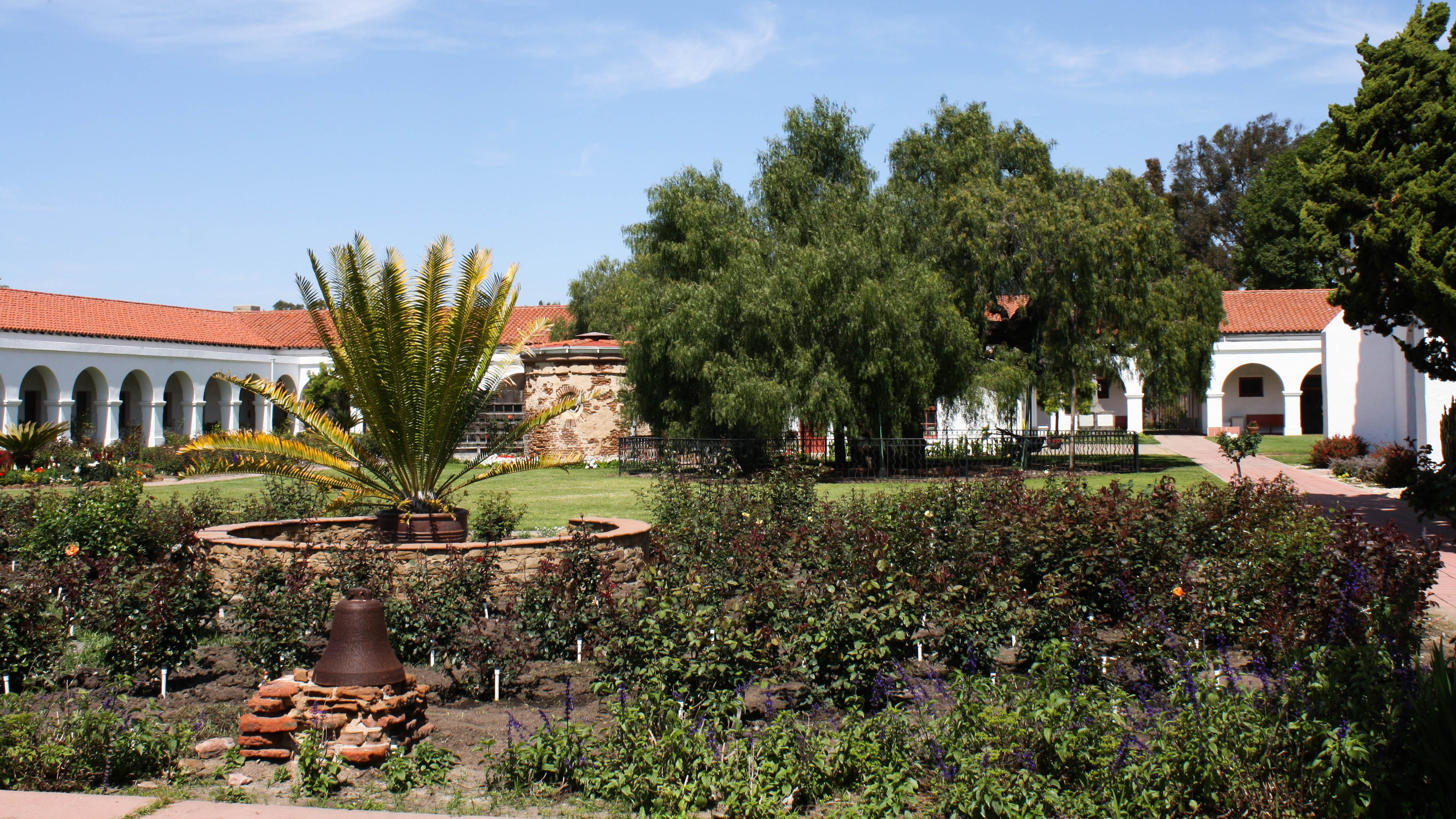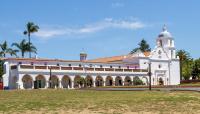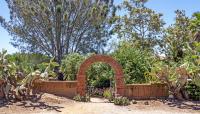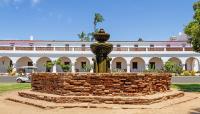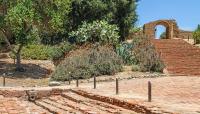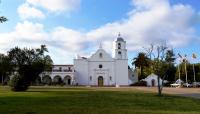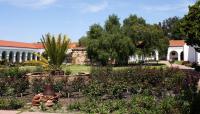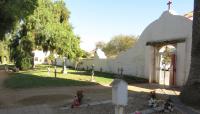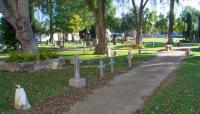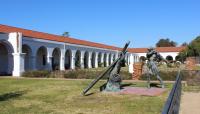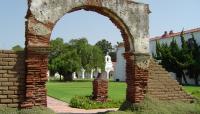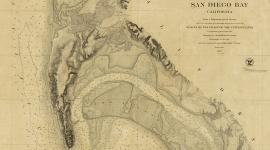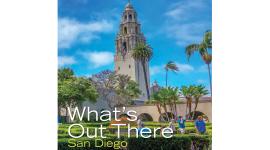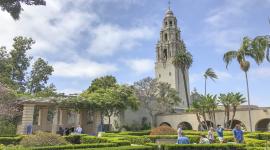Landscape Information
Founded in 1798, this institution was the largest in a chain of Spanish missions built in California during the eighteenth century, encompassing some 950,000 acres at the height of its development. Following the arrival of the mission, the local Luiseño people experienced significant population decline. The Mexican government secularized the mission in 1834, its lands then sold or gifted in land grants. Beginning in 1850, the mission became a U.S. Army base but was returned to the Catholic Church in 1865. Abandoned for nearly 30 years, the mission reopened in 1892. Over the next twenty years, the church was restored, and new living quarters were built on the original site of the mission. The quadrangle (now a retreat center) was rebuilt in 1949, and the soldiers’ barracks and lavanderia (open-air laundry) were unearthed throughout the 1950s and 1960s.
Situated on hill south of the San Luis Rey River, the 56-acre site is centered around a quadrangle of dormitories and workshops that frame two courtyards that together contain a nearly 200-year-old pepper tree, various statues, colorful flower arrangements, and an enclosed monastic garden. Originally built in 1815, the adjacent cruciform church borders a cemetery founded in 1798. Partially shaded by deciduous trees, the north lawn contains the archaeological ruins of military barracks and a two-tiered stone fountain. Farther south, a brick archway opens onto a grand staircase that descends to the mission’s sunken garden, a tiled courtyard that once served as the lavanderia. In 1970 the Mission San Luis Rey de Francía was listed in the National Register of Historic Places and became a National Historic Landmark.



